Visit our QUIZZ organized by the CNRS and SABIOD : who is singing in this submarine nice sounds...:
QUIZZ A: sirena ?
QUIZZ B: who is the baby ?
QUIZZ C: the champion diver !
QUIZZ D: a monkey or a whale ?
SABIOD is streaming the sounds from north Canada Orcalab, we will display Orca detectors on line in the 3D interface:
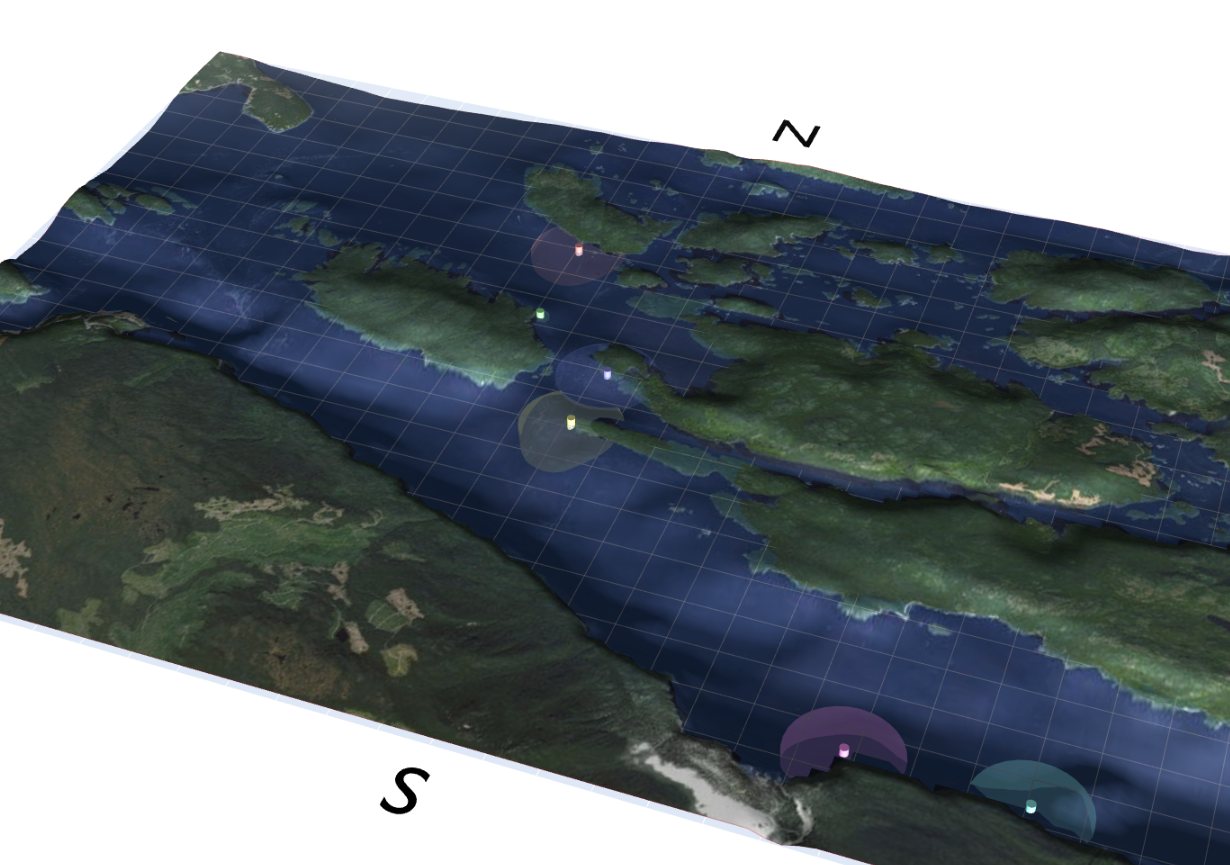
Fig.:3D interface that will represent ORCA SONG classification (ready in february 2016...)
ANTARES for SABIOD:
SABIOD is indexing for the DECAN Pelagos project, months of cetaceans bioacoustic activities while swiming near Toulon. We shown the impact of the boat noise on cetacean activities. You can visit samples of recordings (sound .wav at 250kHz FS to read with audacity, and reports in text and graphic .png to zoom in, for two detectors : Physeter macro. and Stenella coer. The recordings are from -2500 meters depth, with online glass fibers connected to Toulon. The .wav data are from our collaboration with the ANTARES astrophysic observatory.BOMBYX SABIOD sonobuoy for whale 3D survey:
The BOMBYX multimodal buoy south of Port-Cros National Parc / Cote Azur is recording whales, dolphins and boat noise on long term series. We do then survey the whales and boats...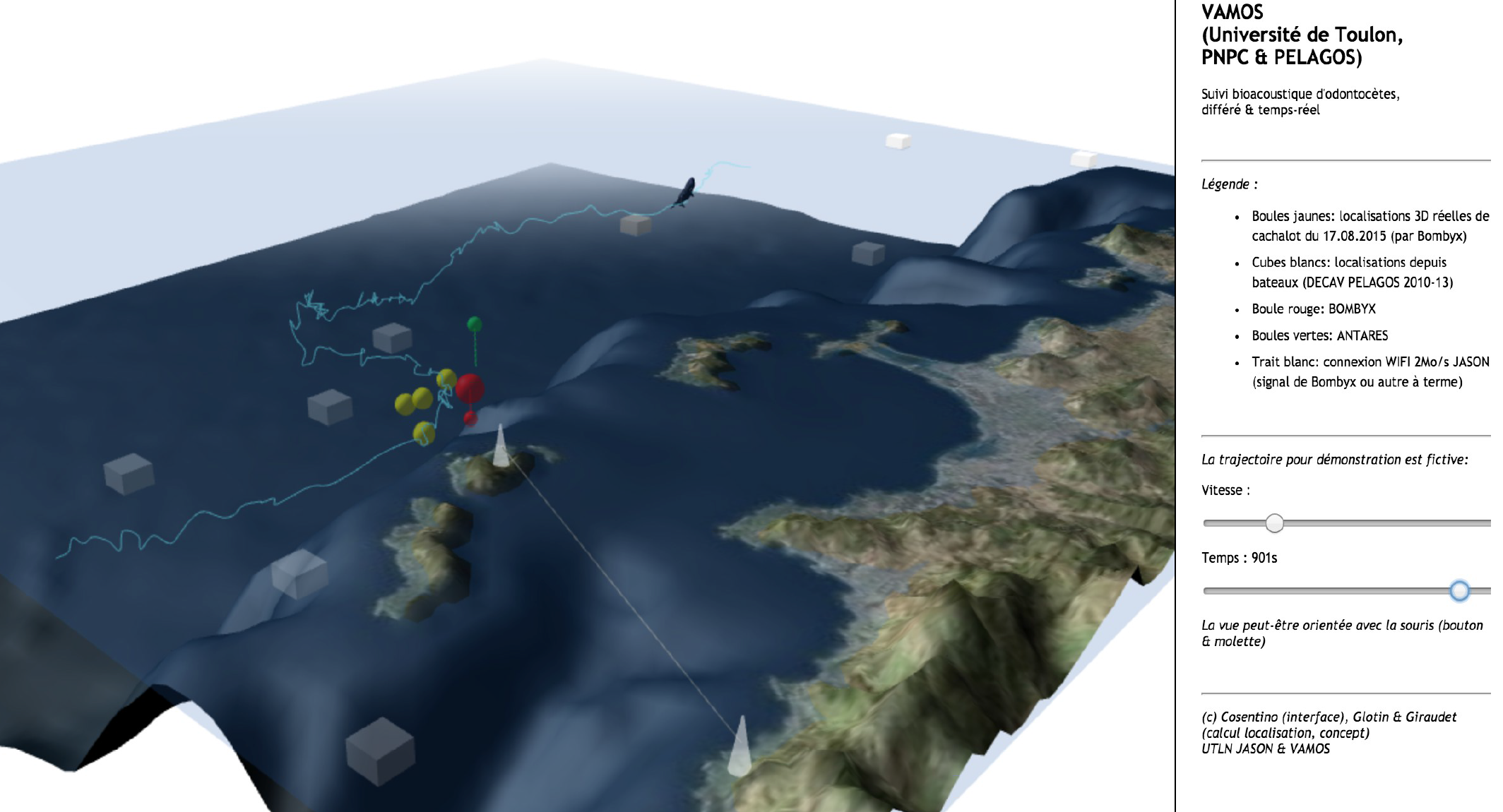
Fig.:3D DYNI interface that represents detected whales...
The Bombyx multimodal buoy is recording since july 2014 whales activities and boats noises south of the Port-Cros National Parc (PNPC). It also takes pictures and compute the speed of the water stream. It is a collaborative project (PI Glotin) started in 2011 by LSIS + MIO CNRS labs, supported by Univ. Toulon (UTLN), Inst. Universitaire de France (IUF), Toulon Provence Méditerranée (TPM), CG83, PNPC, and SABIOD MI CNRS MASTODONS. Upload 5 min. of sound from BOMBYX [FS=44.1 kHz C55 Cetacean Research]. You hear 2 dolphins (Stenella) touching Bombyx 3 times, the regular clics (each half second) of one sperm whale (Physeter macrocephalus), and some boats noises.
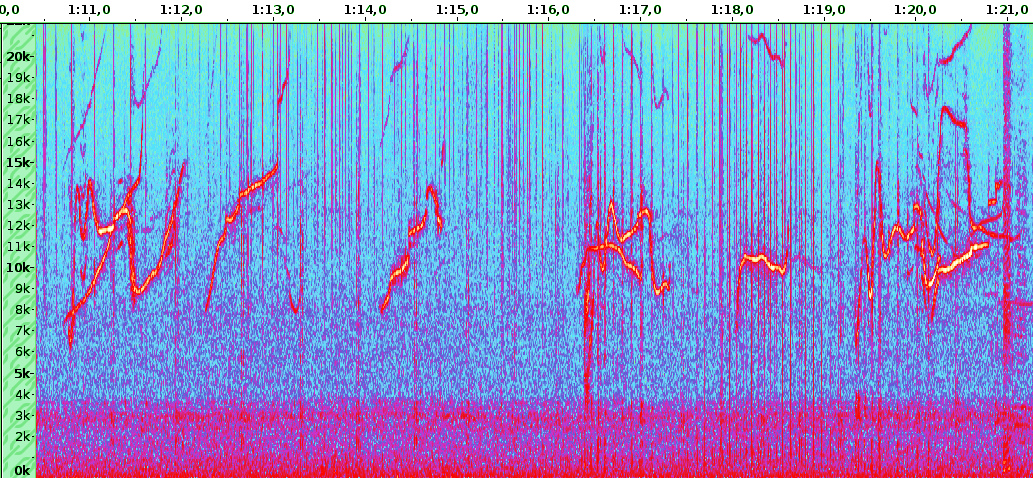
Fig.: spectrogram of BOMBYX SABIOD showing crossing whistles of 2 dolphins, and clics (each half second) of the Physeter (time min:sec, freq. Hertz).
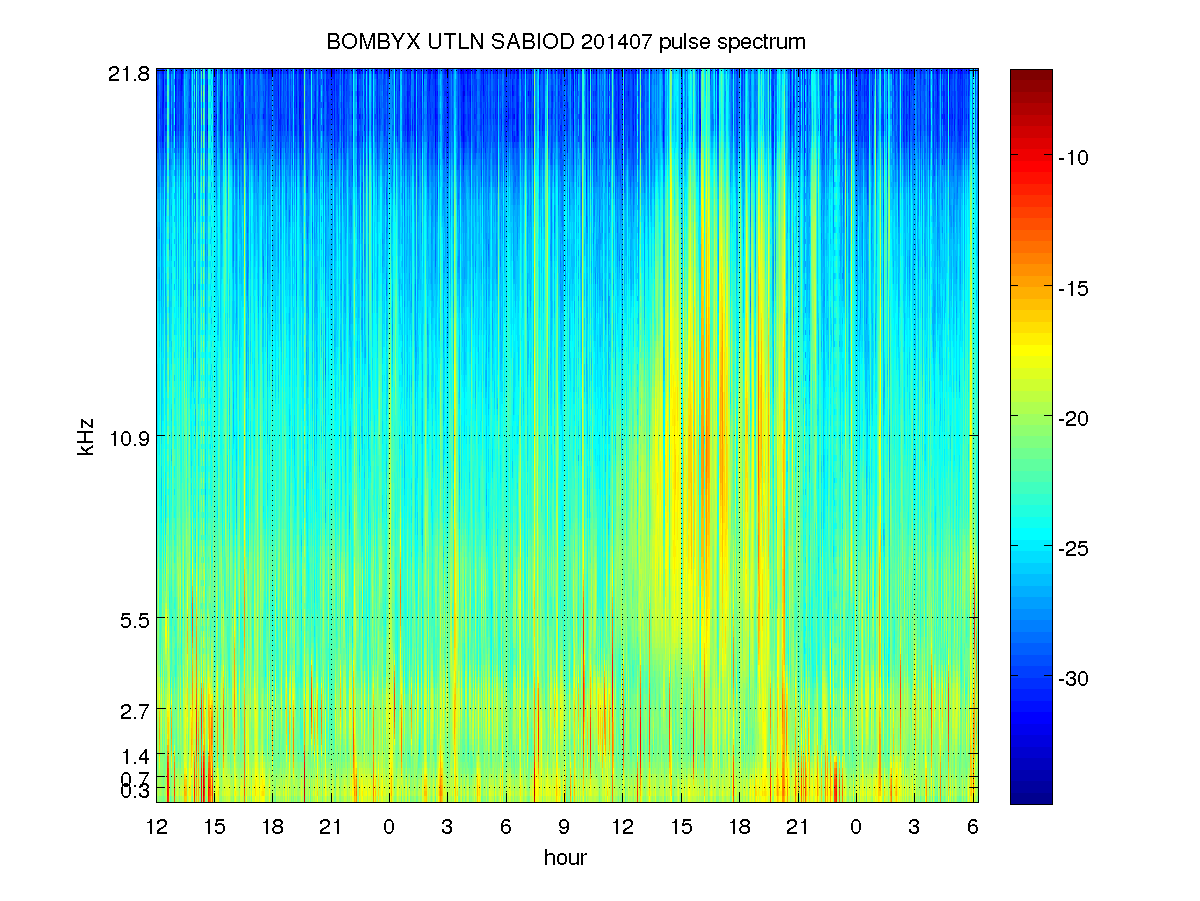
Fig.: Long term BOMBYX SABIOD spectrogram showing Physeter clics from 2pm to 8pm the 2nd day (zoom to see regular silences = the whale is breathing each 50 min. during 5 min.).
NIPS Challenge on whale song representation
In the context of the NIPS4B challenge on whale song representation, we provide 26 minutes of a remarkable Humpback whale song recording, obtained at few meters distance from the whale in La Reunion - Indian Ocean [credit Darewin group, 2013] (frequency sample = 44.1kHz, 32 bits, mono, wav, 130MB). Upload here 26 minutes of a remarkable Humpback whale song recording.
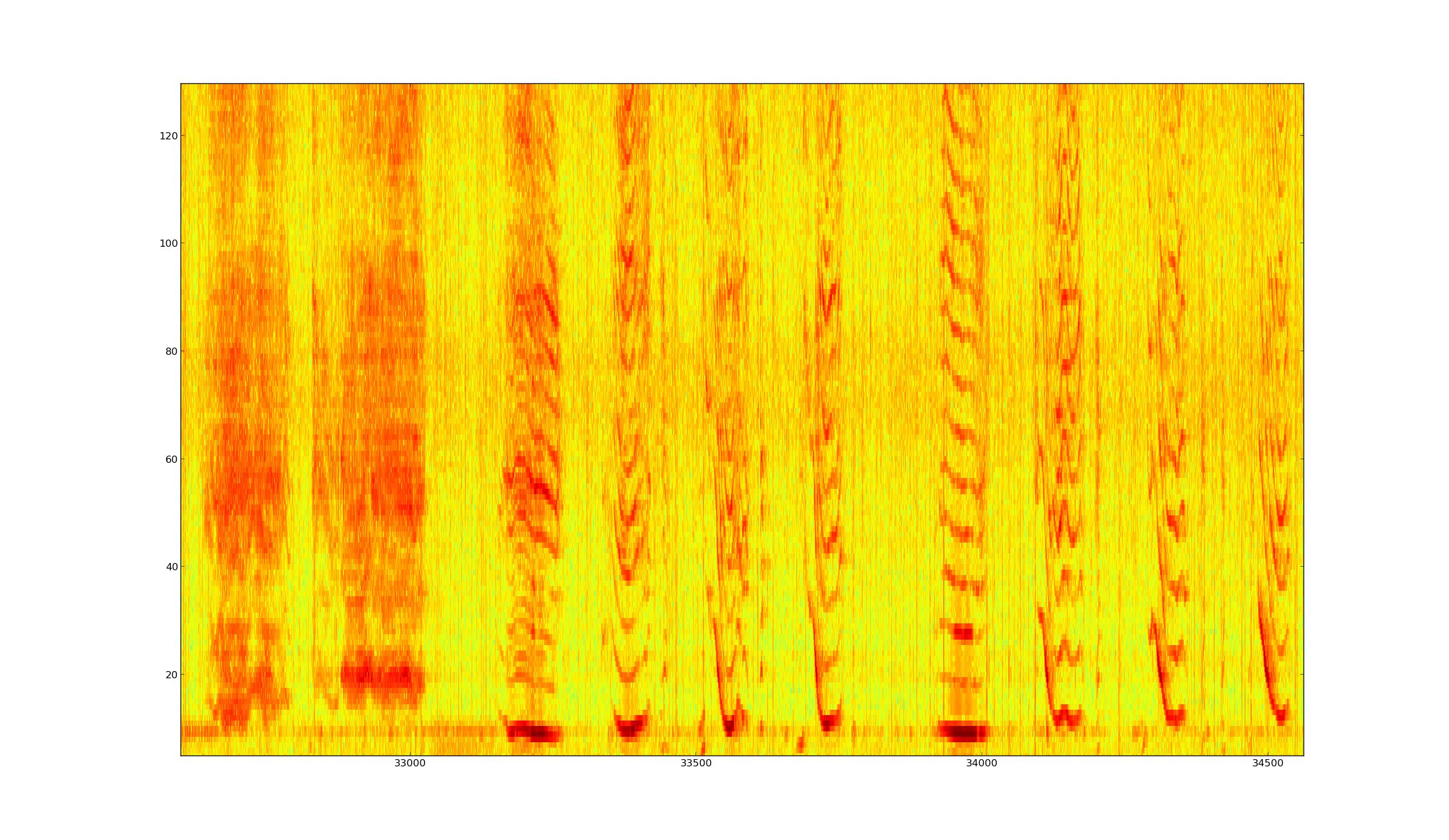
Figure: Spectrum of around 20 seconds of the given song of Humpback Whale.
We also give the usual Mel Filter Cepstrum Coefficients of this wav file (octave / matlab v6 format). The parameters of extraction of these MFCC are given here..
More details are give on the NIPS challenge 2
SCATTERING PROCESSING:
Gabor Scattering using Scanet enhances Humpback song [Glotin et al. NIPS4B 2013]. See also Trone, Baleitrino and Glotin NIPS4B2013 for scattering on biosonar.Bio-sonar samples
Some samples and paradigms of sonar sequences of wild dolphin and bats are given below, more are available, please ask to glotin@univ-tln.fr.
First we provide these clear recordings of Stenella dolphin sonar from the Port-Cros National Park, Côte d'Azur [USTV-PELAGOS DECAV project 2011-12]:
The two next files contain sonar of another dolphin species, the biggest one, i.e. Physeter macrocephalus (15 meters, 40T): file c (28MB), and file d (high signal to noise ratio, recorded at Toulon in 2012-DECAV SABIOD, FS=48kHz, 55MB).
Nice 25 minutes of one Physeter have been recorded on 5 channels in Bahamas by NATO, and we have precisely computed the 4D positions of this whale [Glotin 2008] with its real animation on YouTube. The whole recordings 25 minutes x 5 channels at 48kHz and the positions and references are in this archive (500 MB) (here is one sample of 5 min). You find a sparse coding representation of these clicks in [Paris et 2013].
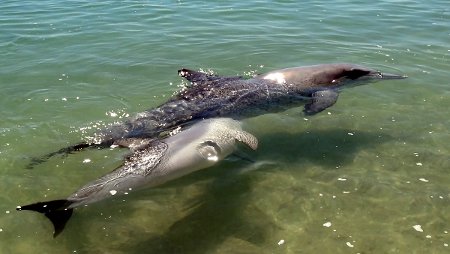
Fig: The sonar sample given below is from Nicky, here with her calf, recorded at Shark Bay Australia (cred. Giraudet 2013).
This Tursiops sonar sample is from the wild dolphin called Nicky, 37 years old, visiting nearly daily Monkey Mia Bay (frequency sample 96kHz, 32 bits, with CR55 hydrophone of Cetacean Research). Here is its time-amplitude representation:
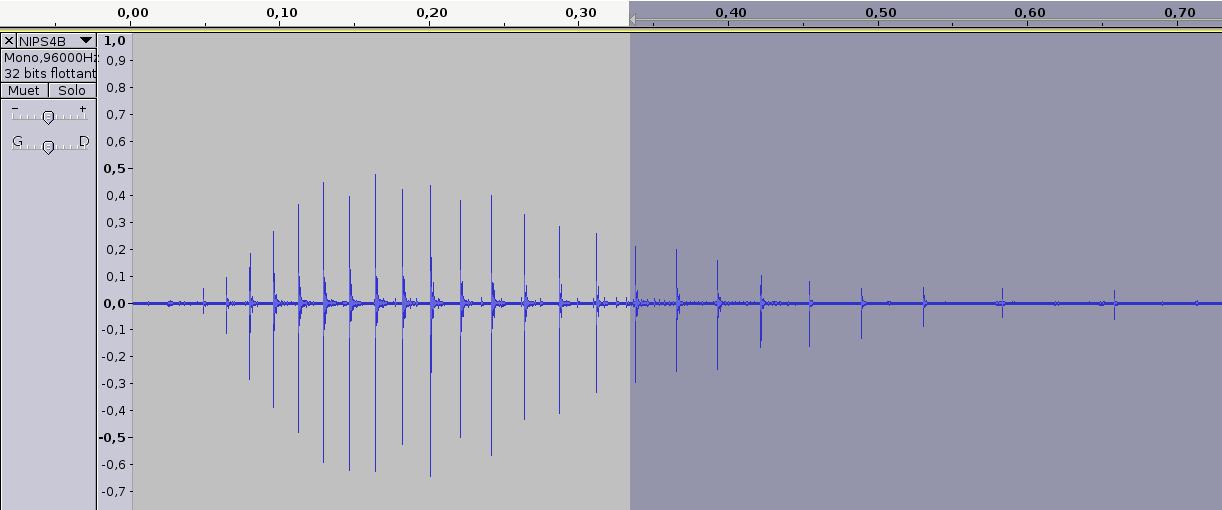
Fig: The time-amplitude representation of this Nicky's sonar short sample (0.7 sec).
Here we give a longer sequence of Nicky (same FS=96kHz, 32 bits, 19MB), recorded at 2m from her noise. You may use Audacity or GNU Octave to read it.
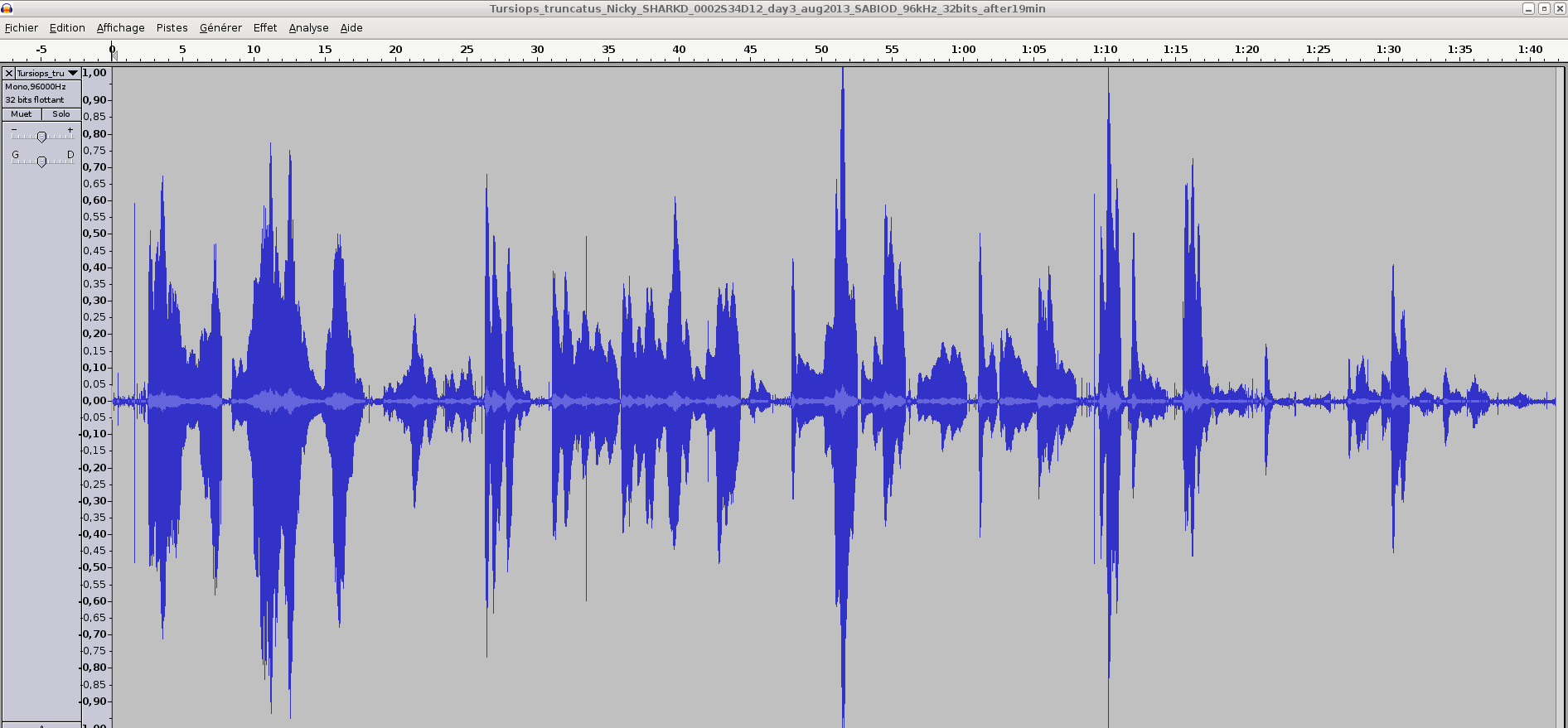
Fig: Longer time-amplitude of Nicky's sonar (100 sec.): same file e.
Here we give a sample of Myopterus bat's sonar sample (credit Cyberio) (frequency sampling=250kHz, duration=4 seconds, 53MB)

Fig: The time-amplitude representation of this bat sonar sample. The nearest point of approach (NPA) to the microphone corresponds to the highest amplitude (near the sample #400K). Before NPA, the bats flies in direction to the microphone, after NPA the bat emits in the opposite direction.
Photo-acoustic automated surveillance of fauna in "vallon de notre Dame", Port-Cros national park
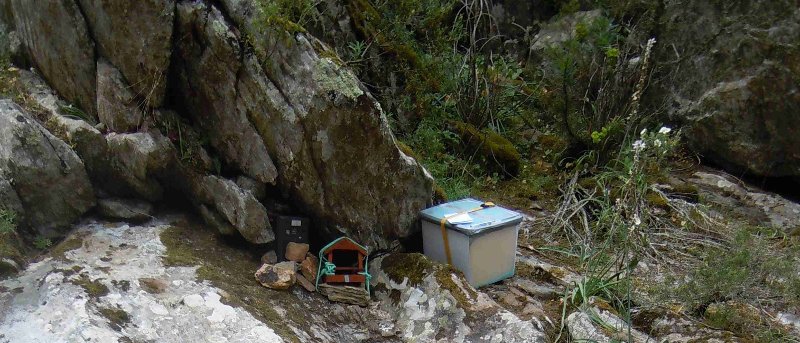 more details
more details
Acoustic recordings by autonomous recorder in "Monts d'Azur" biological reserve, Thorenc
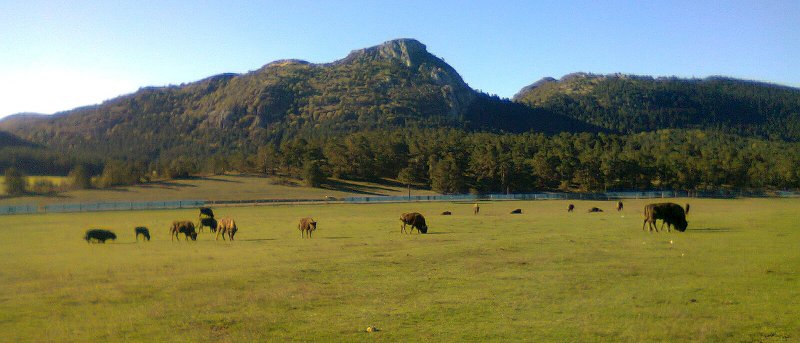 more details
more details
Detection and classification on audio-visual transect of North PELAGOS and Stoechades archipelago cetaceans populations (DECAV project)
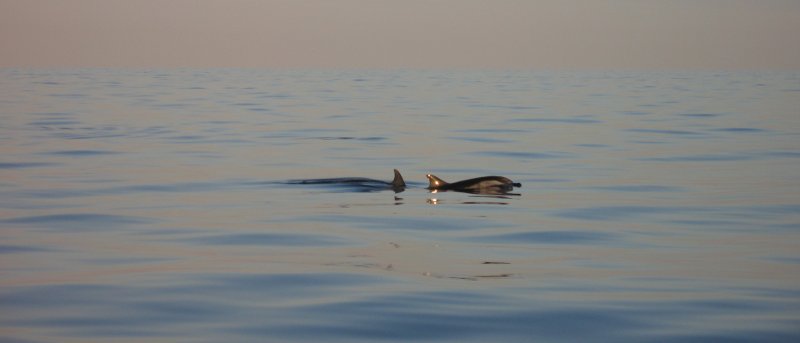 more details
more details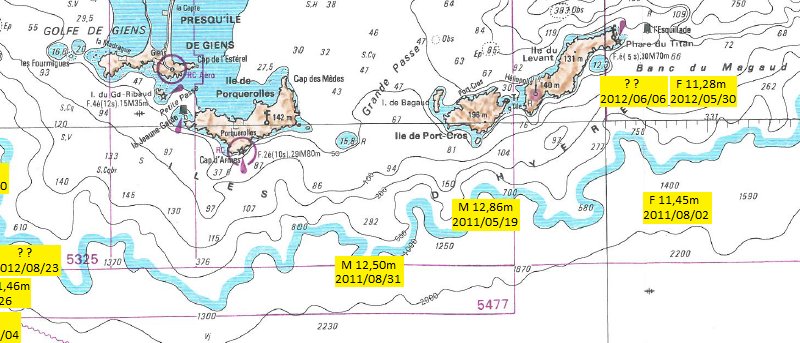 Physeter Catodon (Sperm Whales) detections and automatic length estimation (yellow labels) from SABIOD processes - DECAV 2012 (Click on the map to enlarge)
Physeter Catodon (Sperm Whales) detections and automatic length estimation (yellow labels) from SABIOD processes - DECAV 2012 (Click on the map to enlarge)A short movie about the Pelagos sanctuary
Port-Cros National Park and Thorenc positions
GROSMARIN submarine recordings in Provence-Ligurian sea used in SABIOD for fin whale tracking
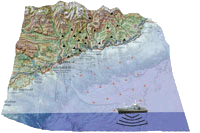
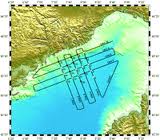
more details
